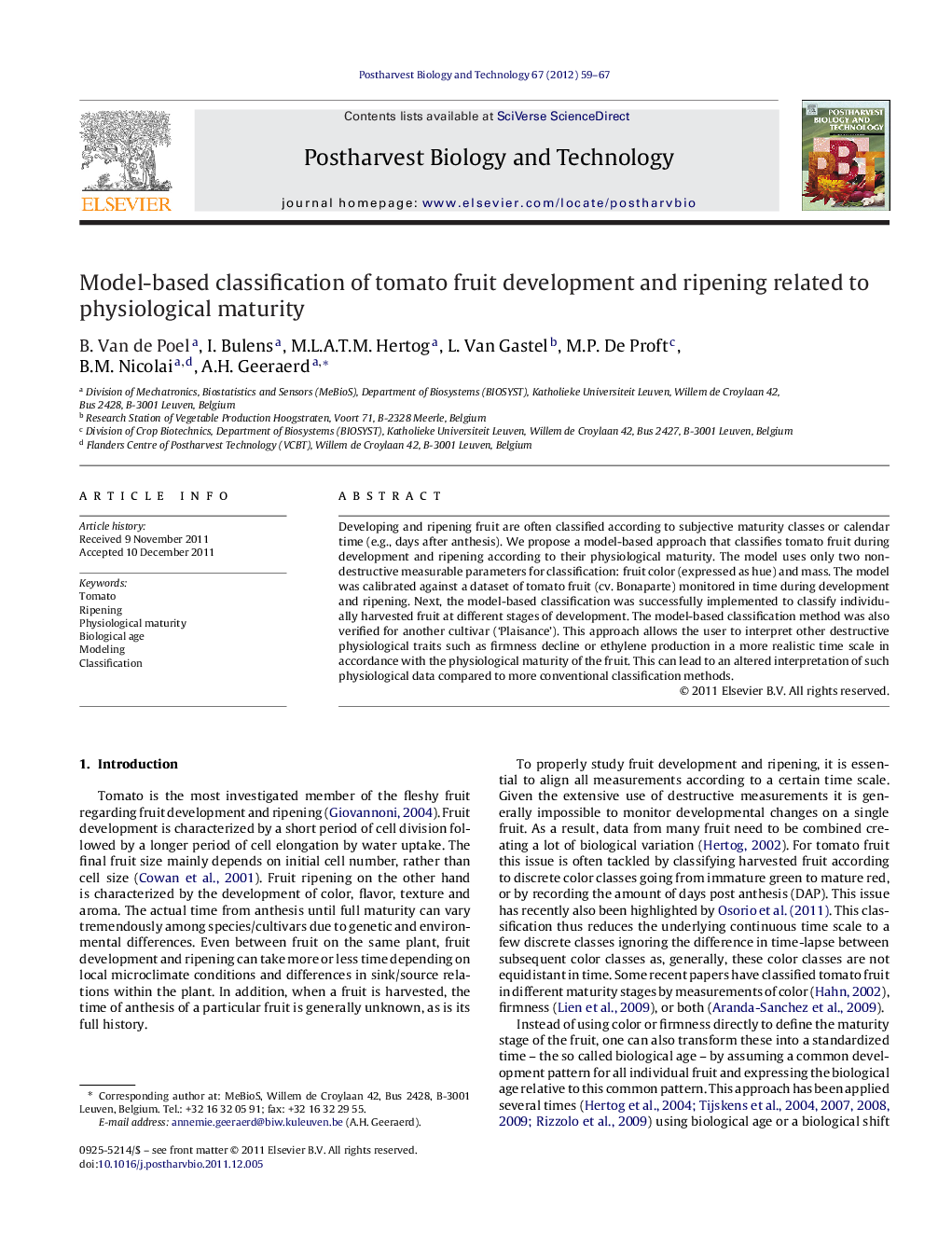| Article ID | Journal | Published Year | Pages | File Type |
|---|---|---|---|---|
| 4518751 | Postharvest Biology and Technology | 2012 | 9 Pages |
Developing and ripening fruit are often classified according to subjective maturity classes or calendar time (e.g., days after anthesis). We propose a model-based approach that classifies tomato fruit during development and ripening according to their physiological maturity. The model uses only two non-destructive measurable parameters for classification: fruit color (expressed as hue) and mass. The model was calibrated against a dataset of tomato fruit (cv. Bonaparte) monitored in time during development and ripening. Next, the model-based classification was successfully implemented to classify individually harvested fruit at different stages of development. The model-based classification method was also verified for another cultivar (‘Plaisance’). This approach allows the user to interpret other destructive physiological traits such as firmness decline or ethylene production in a more realistic time scale in accordance with the physiological maturity of the fruit. This can lead to an altered interpretation of such physiological data compared to more conventional classification methods.
► Tomato fruit can be classified based on their physiological maturity by the model. ► Continuous observations of fruit mass and color were used as model calibration. ► Harvested fruit with single point observations can be rescaled according to their biological age. ► A more time-realistic representation of fruit development and ripening is possible.
